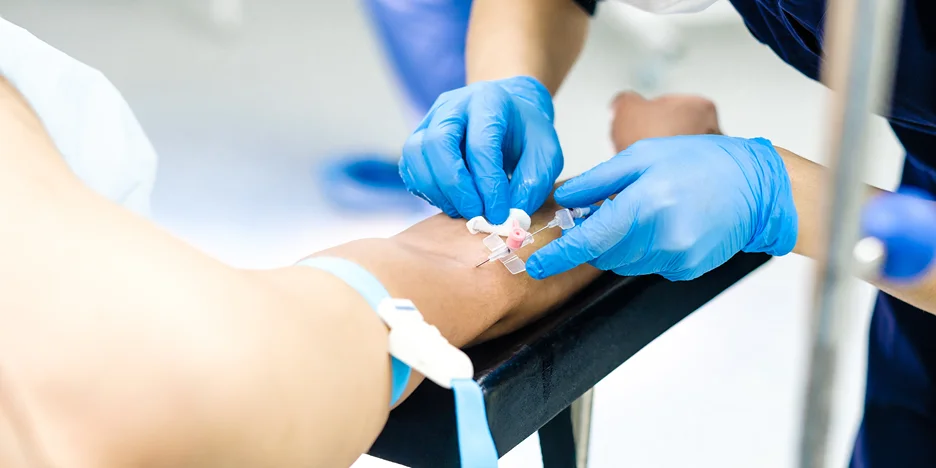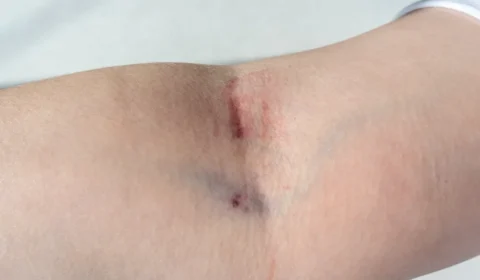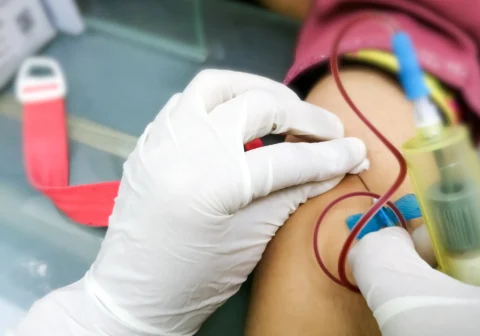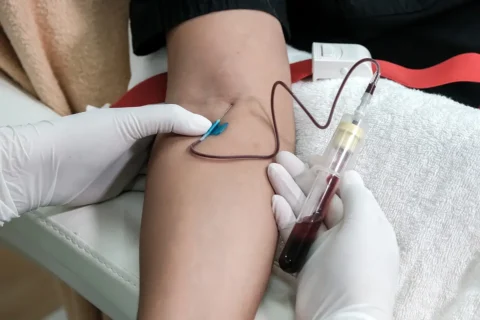Administering intravenous (IV) fluids and medications is a common medical procedure, but it requires careful attention to infusion rates and techniques to ensure safety. This rings true whether you’re using a hypodermic needle, straight needle, or butterfly needle.
Let’s assume you’re using the latter. When infusing 500mL through a small 23 gauge butterfly needle into a vein, how fast can it be safely administered? There are several key factors that impact flow rates and guide appropriate infusion speeds.
Gauge and Diameter – The Needle Makes a Difference
To start, the gauge and diameter of the intravenous (IV) catheter or needle is one of the primary determinants of flow rates. Gauge refers to the outer diameter of a needle, with higher numbers indicating smaller diameter needles.
For reference, a 23 gauge needle has an outer diameter of 0.0253 inches and an inner diameter of 0.0133 inches. This small lumen size physically limits how fast fluid can pass through the needle, compared to larger options like 20 gauge (0.032inch diameter) or 18 gauge needles (0.0492-inch diameter).
The Poiseuille equation demonstrates that flow rate is proportionally related to the radius raised to the 4th power – thus, the smaller the IV catheter, the slower fluids can infuse under the same pressure.
Typical Infusion Times of 500mL Through a 23 Gauge Needle in a Realistic Scenario
Let’s consider this hypothetical clinical scenario.
John is a 65-year-old male patient weighing 175 lbs who has been admitted to the hospital with pneumonia. His physician has ordered 500mL of normal saline to be infused intravenously over 4 hours.
The nurse starts a 23 gauge butterfly needle in a vein on the back of John’s left hand and connects macrodrip tubing with a 10 gtts/mL drop factor. She hangs the 500mL IV bag of normal saline 3 feet above John’s heart level.
Given John’s age and smaller vein size in his hand, the nurse conservatively sets the flow rate at 100mL/hr to infuse the full 500mL over about 5 hours. This allows for slower infusion appropriate for John’s age and vein fragility.
Using the formula:
Infusion Time = Volume / Flow Rate
The calculated infusion time would be:
500mL / 100mL/hr = 5 hours
Therefore in this clinically realistic scenario, infusing 500mL through a 23 gauge butterfly needle in John’s hand vein at a moderately reduced rate of 100mL/hr would take approximately 5 hours.
It’s important to note this doesn’t account for any potential interruptions or rate adjustments needed during the process.
In practice, the actual infusion time can vary due to several factors including the patient’s blood pressure, the exact positioning of the needle, and the viscosity of the fluid being infused. Flow rates can be further increased through the use of infusion pumps or pressure.
Maximizing Flow Rates with a 23-Gauge Butterfly

While a 23 gauge butterfly has a fixed diameter that restricts flow rates, there are techniques to safely optimize flow rates within these restrictions.
- Elevating the IV bag 18 to 24 inches above the insertion site utilizes gravity to increase pressure and push fluid faster.
- IV tubing should be kept short with no kinks and the roller clamp opened fully. Using an IV infusion pump can provide regular flow rates higher than gravity alone.
- Veins with adequate size and integrity can also help maximize flow in individual patients.
- Exceeding appropriate flow rates risks complications like infiltration, which can heighten the risk of infection.
Why Flow Rates Matter for Patient Safety
Higher flow rates may allow quicker infusion, but too rapid IV fluid administration carries risks.
- When fluids are infused faster than veins can absorb, leakage into surrounding tissues can occur, leading to infiltration or extravasation injuries. These are especially concerning with caustic or hypertonic solutions that could damage tissue.
- Patients may experience pain, swelling, and damage at infiltration sites.
- High rates also increase the risk of fluid overload for vulnerable patients with cardiac or renal issues.
- Careful monitoring of the IV site is required, along with gradually increasing rates to identify maximum tolerable flow speeds.
Adhering to Safe Administration Rates
Flow rates should align with standards based on the catheter gauge. Careful monitoring is important but may not justify exceeding the maximum recommended rates.
Clinicians must evaluate each patient individually and monitor for signs of infiltration or fluid overload, being prepared to slow rates as necessary. Using infusion pumps allows precise regulation of flow rates.
Special Considerations for Pediatric and High-Risk Patients
For pediatric patients, infusion rates with small 23-gauge butterfly needles must be significantly reduced compared to adults. Sources indicate typical maximum rates around 25-50 mL/hr for fluids and only 1-5 mL/hr for medications administered through pediatric 23 gauge peripheral IVs.
Additionally, high-risk pediatric populations like neonates or those with cardiac/renal issues require even slower rates and more diluted concentrations to prevent fluid overload. Maximum infusion rates can be as low as 10-25 mL/hr for fluids in these vulnerable pediatric patients.
Close monitoring for infiltration and other adverse effects is essential in high-risk children. Current guidelines also recommend that 23 gauge butterfly needles be replaced every 24-48 hours in pediatric patients to reduce risks of phlebitis and infiltration.
A 500 mL intravenous infusion would likely never be administered through a single 23 gauge butterfly needle in pediatrics due to the very slow rate limitations.
- Small-volume infusions of less than 50 mL over several hours are more typical.
- For rapid large-volume resuscitation, larger 20-22 gauge peripheral IV catheters or central venous access are utilized.
Techniques for Achieving Target Flow Rates
Optimizing flow rates for safe infusion through narrow gauge IV needles like a 23 gauge butterfly requires attention to set up and careful monitoring.
- The use of an IV pump is ideal for regulating speed. The pump should be calibrated per manufacturer instructions and set to the desired flow rate
- The pump should be calibrated per manufacturer instructions and set to the desired flow rate.
- IV tubing should be free of kinks and the roller clamp opened fully when using a pump.
- For gravity flow, adjust the roller clamp precisely, elevating the IV bag 18-24 inches above the insertion site.
- Check for patency and signs of infiltration at regular intervals. Increasing flow rates gradually aids the detection of early infiltration.
- Having adjunct devices on hand like arm boards and lymphedema sleeves can also help stabilize IV sites and veins in fragile patients.
Careful clinical judgment is required to achieve target infusion rates safely through small gauge IV catheters like 23 gauge. Close observation and monitoring for signs of infiltration is critical.
Clinical Diligence Is Always Necessary for Safe High Flow Rates
Achieving safe, effective flow rates when infusing 500mL through a small 23 gauge butterfly needle requires careful evaluation of the gauge diameter, individual patient’s veins, use of pumps or gravity flow, and diligent IV site monitoring.
Clinicians must remain vigilant and ready to intervene at the first sign of infiltration or fluid overload by adjusting flow rates or discontinuing the infusion.
With astute nursing care, the challenges of infusing through a small gauge needle can be managed successfully. Patients are relying on our expertise to administer IV therapy in a safe, therapeutic manner.
Your One-Stop Shop for Aesthetic Practice Supplies and Training

Face Med Store offers a vast selection of supplies for aesthetic, cosmetic, and wellness practices. Browse top injectables, innovative devices, professional skincare, quality tools, and more. Stay sharp with online injection training for CME credits.
Discover Face Med Store’s quality products and solutions to take your practice to the next level.






